1. Ansan Multicultural Food Street
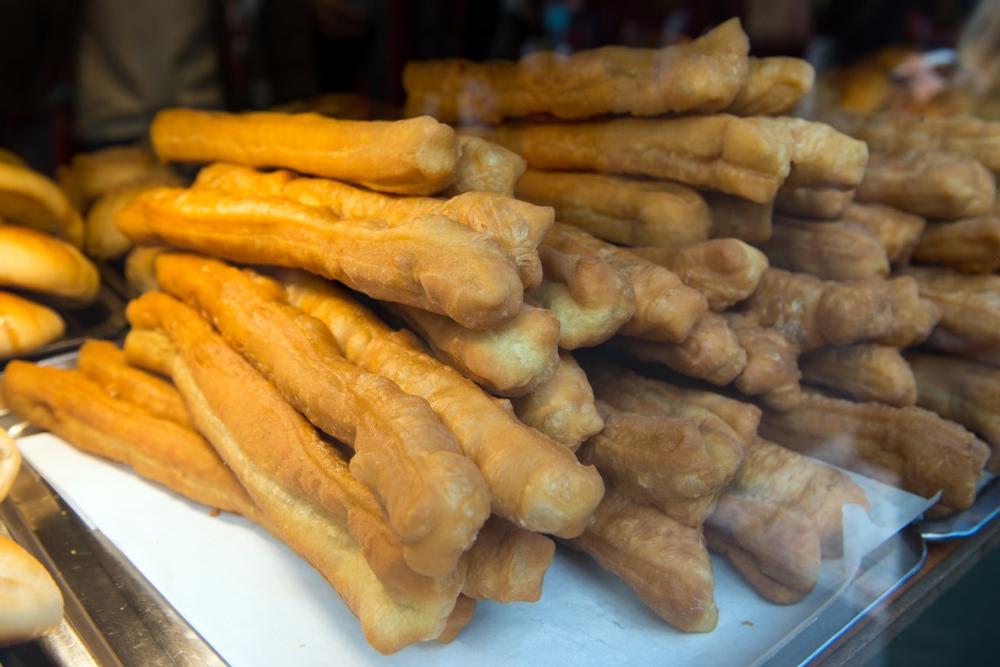
Ansan is a multi-cultural city that is home to much of the migrant working-class families in Korea. Immigrants make up less than 1% of the Korean population and two-thirds of those immigrants live in Ansan. Most of the immigrants are South East Asia and China thus the city feels more like those areas than Korea. Street signs and storefront signs are even written in Vietnamese or Chinese instead of Korean.
Ansan Multicultural Food Street is where all of these different immigrant communities come together to offer food from their homelands. The street is in the Wongok-Dong district adjacent to the Ansan Station, so it is easy to find. Food vendors, as well as restaurants, set up booths and offer various foods even in the wintertime when the temperatures can get below freezing. Visitors from Seoul can reach Ansan is one to two hours.
2. Bukhansan National Park
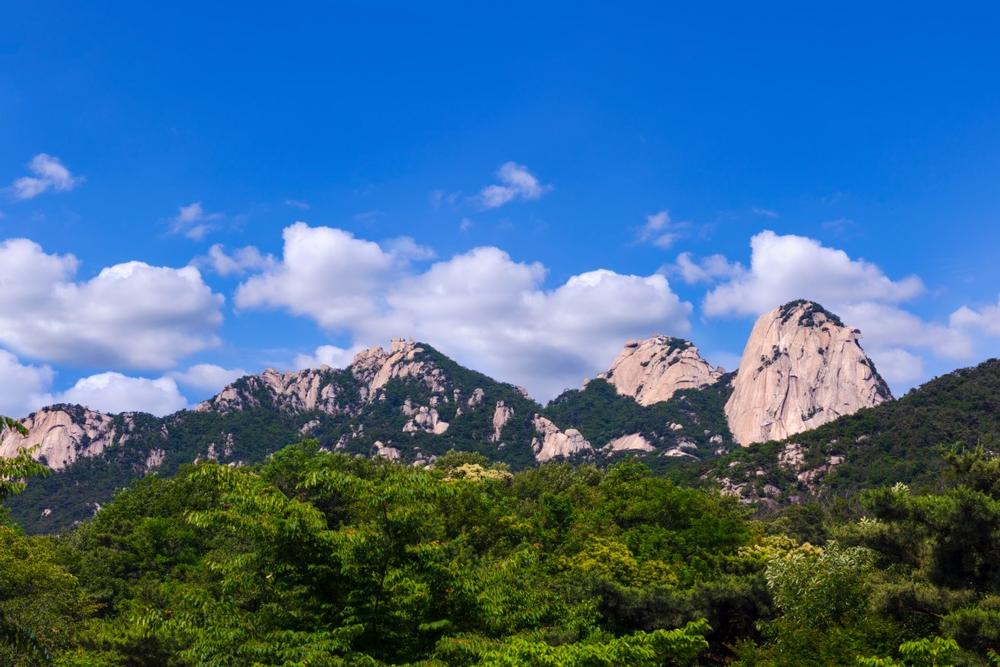
Bukhansan National Park is the Most Visited National Park per Unit Area and is listed in the Guinness Book of World Records for the achievement. The park receives five million visitors per year and is the most popular hiking and nature area in the Seoul mountain area, and perhaps the entire country. The park is easily accessible using public transportation from anywhere within Seoul, and the journey takes only twenty-five to thirty-six minutes. The highest peak at Bukhansan National Park is Baegundae Peak, which tops at 836.5 meters. Mangnyeongdae Peak is also very tall at 799.5 meters. The National Park is known for its gorges and granite mountains, spectacular fall foliage and crystal clear streams and waterfalls. There are three different park entrances, and each has amenities and restaurants serving traditional Korean meals.
262 Bogukmun-ro, Jeongneung-dong, Seongbuk-gu, Seoul, South Korea, Phone: +82-29-09-04-97
3. Busan
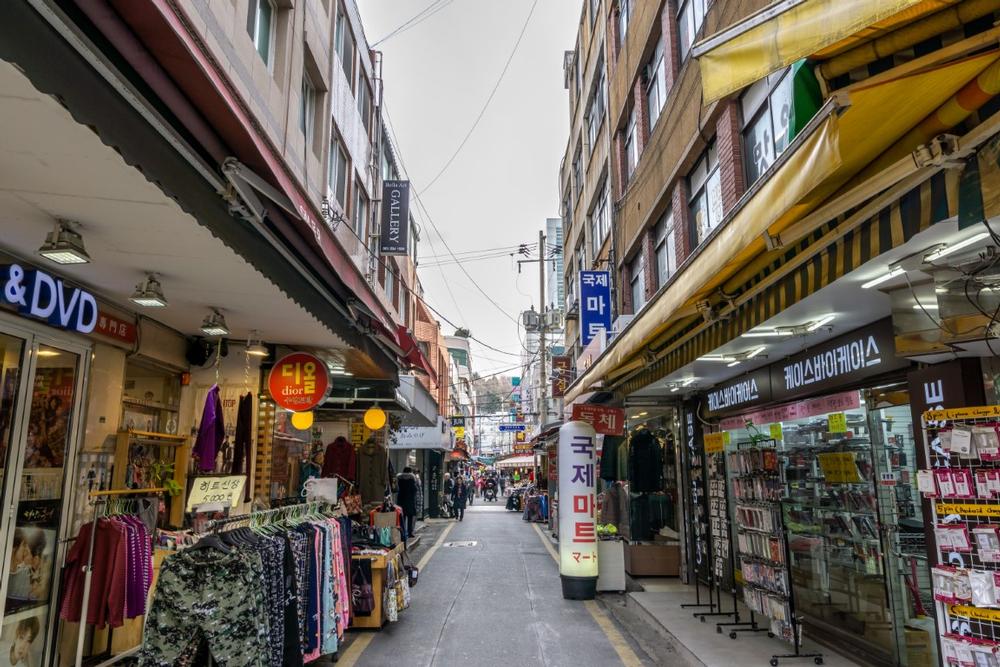
People love to spend the day shopping and visiting tourist attractions when they spend a day in Busan, Korea's second-largest city. Busan is home to numerous streets lined with boutiques, department stores, and specialty shops, as well as the largest department store on earth--Shinsegae Centum City. Another popular place to visit in Busan is Jagalchi Seafood Market where visitors can get incredibly fresh seafood for low prices and watch it prepared right there on the street to be ready to eat. Gukje Market is also popular but is more traditional with vendors and merchants selling wares in booths along the street. The number one tourist attraction in Busan is the Nampo-dong, where the Pusan International Film Festival takes place annually, and dozens of street food vendors are available.
4. Chuncheon

The lakeside city of Chuncheon is a great spot for romantic getaways and just one hour from Seoul when using the ITX Train. The city's name means "a stream that flows when spring comes," and is known for its beauty is both the spring and the fall. Visitors can spend a full day in Chuncheon, but a two-day itinerary is recommended to get the full experience for a relaxing trip to recharge and reconnect. Namiseom Island is a popular attraction in Chuncheon and is also the site of the film "Winter Sonata." The island was not always an island, however, and was formed due to the creation of the Cheongpyeong Dam. There are many walking trails on the island that usually takes a half-day to explore. Other popular attractions on the island include several picturesque roads, the UNICEF Hall, and Song Museum. In Chuncheon, visitors can stroll Jade Garden Natural Arboretum, the Gyeonggang Rail Bike, Myeongdong Street, and the Chuncheon Romantic Market.
5. Daecheon Beach

Daecheon Beach is found on the west coast of South Korea and open during summer months, usually from mid-June through mid-August. Thousands of visitors come to the 3.5-kilometer beach featuring white sands and a private 100-meter sunbathing zone. Daecheon Beach never charges admission and is just a five-minute walk from bus stops. There are many places to get food and drink along the beach, as well as stands to rent tubes. The most popular time to visit Daecheon Beach is during Mudfest, Boryeong Mud Festival, which is held in July each year. The festival brings more than two million people to Boryeong and Daecheon Beach. The mud is trucked up from the Boryeong Mud Flats and is said to be rich in minerals. Many cosmetics companies use this mud in their products. The two-week festival culminates in a huge final weekend party.
Daecheon Beach, 123, Meodeu-ro, Boryeong-si, Chungcheongnam-do
Romantic Day Trips from Seoul:
6. Danyang
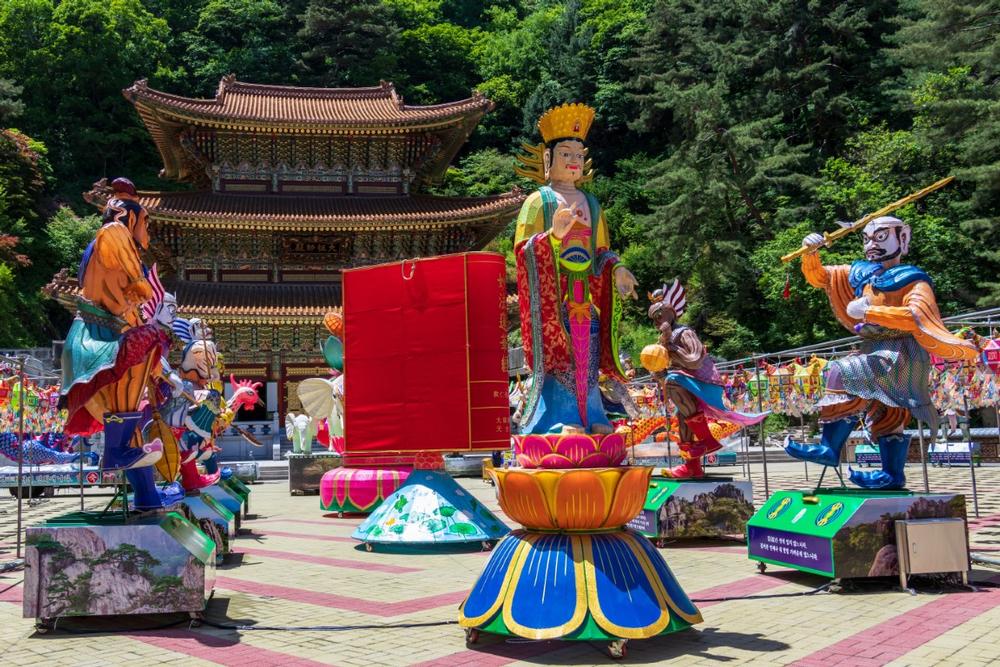
North Chungcheong is home to Danyang, a lake resort community surrounded by forested national parks, mountains, and caves as well as ancient temples. The town is considered the top attraction in North Chungcheong but is a new town in South Korea, established in 1986. The site was built where an old city is submerged beneath the manmade Chungju Lake. Danyang is accessible by bus from Seoul, as well as trains, boats, and planes. Most of Danyang is best explored by foot; however, there are many taxis that can take visitors to the main attractions. Gosu Cave is one of the main attractions of Danyang and is one of the most famous caves in all of Korea. The cave features limestone caverns, 1.5km of walkways, and narrow tunnels. Ondal Fortress is another great attraction, though it is a reconstruction of the original.
7. DMZ
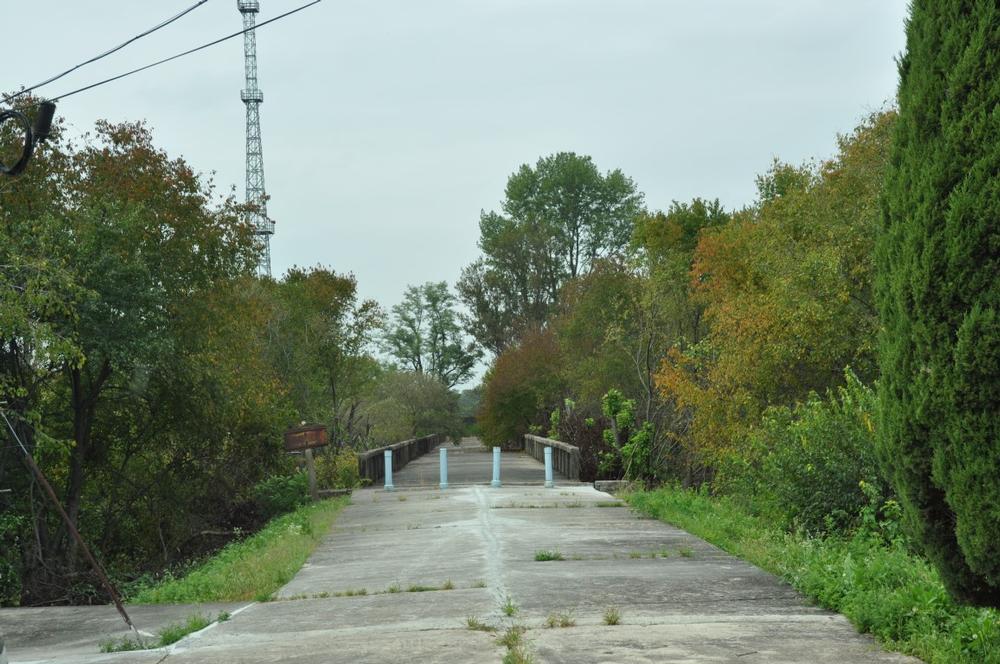
The DMZ refers to the Korean Demilitarized Zone between North and South Korea and stretches for 248 kilometers, going from the Yellow Sea to the East Sea of Japan. The zone is also 4km wide with the border between the two countries running directly down the center. The DMZ was created in 1953 at the end of the Korean War as part of the armistice agreement. Either side of the DMZ is highly militarized, and there are few civilian activities that happen in the DMZ, which has turned the area into a natural haven for migratory birds and other animals. There is a current call to action to preserve the DMZ as a national park and wildlife sanctuary.
Visitors to the DMZ usually visit Panmunjom, where the unresolved peace talks occurred, and the remnants of the Dorasan Korail Station near Paju that used to take passengers to North Korea from South Korea although the train has not run since 2008. The railway connects Seoul and Pyongyang, the capital of North Korea. Other great attractions are Imjingak, a four-story museum with an observatory on top, and the infiltration tunnels that North Korea dug to secretly enter South Korea.
8. Gangchon Rail Park

Gangchon Rail Park is built over the Mugunghwa railway that once connected Seoul and Chuncheon. The Gangchon Rail Park is a pedal train that allows visitors to sit back and pedal leisurely together long the discontinued railroad along the Bukhangang River. The attraction is open year-round but operates more frequently between March and October. Parking is available at the stations on both ends of the track and is free for the first three hours. Visitors who wish to use the Gangchon Railbikes can book either a two-seater or four-seater. Along the route, visitors will see the Kim You-Jeong House of literature, Gongjicheon Recreation Resort and sculpture park, Samaksan Mountain, and KT&G Sangsangmadang Chuncheon. Opportunities for shopping and dining area also abundant.
Gangchon Rail Park, 1383, Gimyujeong-ro, Chuncheon-si, Gangwon-do
Family Day Trips from Seoul:
9. Ganghwa Island

Ganghwa Island is a rural county that is made up of several islands, including some with notable historical landmarks. The islands are separated from the coast of Korea by a narrow channel and two bridges that cars may travel on. Directly across the channel is North Korea. The islands are home to many archaeological sites and architectural buildings and are the most western-tourist friendly place in that area. The islands have a high military presence, but the people of Ganghwa Island are welcoming. It is a good idea for non-Korean people to keep their passports handy if they visit the islands and should be aware that no English is spoken on the islands except at the tourist information center located in the Oepo-ri ferry terminal. Ganghwa Island
10. Gapyeong
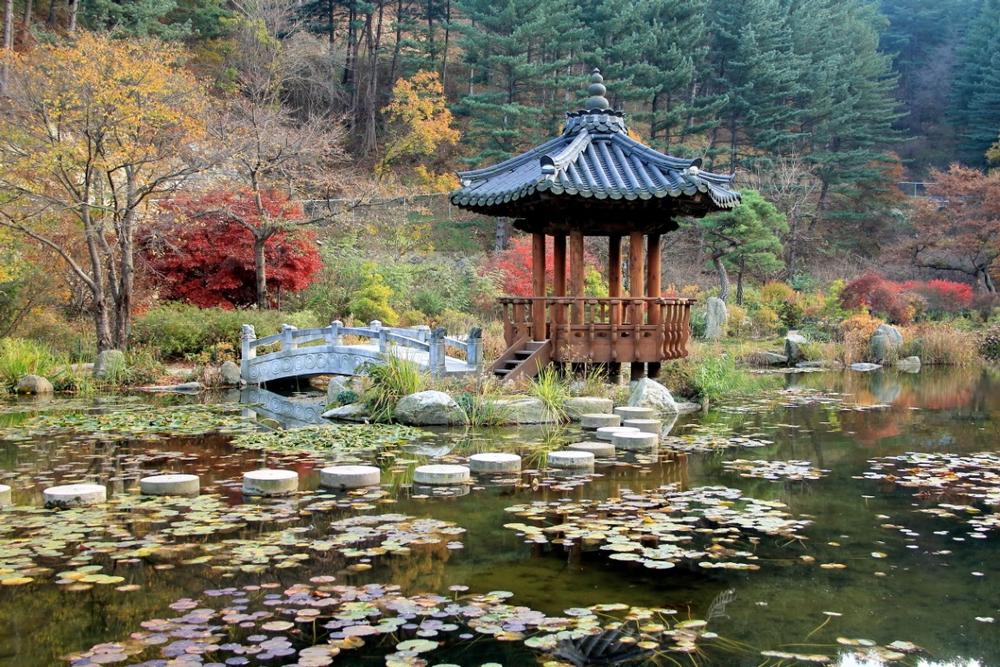
Gapyeong is one of the top 100 Must-Visit Tourist Spots in Korea and is best known for Nami Island and the nearby attractions of The Garden of Morning Calm, Gapyong Rail Park, and Petite France. Gapyeong is just under two hours from Seoul and accessible by car, subway, or train. Visitors will then take a ferry to Nami Island. Some other places to visit in the area include the Sky-Bike, Electric tri-way, UNICEF Charity Train, Story Tour Bus, Forest Adventure, and motorboat rentals. Petite France is a cultural village in rural South Korea that houses a French theme park. The Garden of Morning Calm is the oldest privately-owned garden in Korea and is more than 330,000 square miles. The garden is home to more than 5,000 plant species and is divided into 22 different themed garden areas that can be enjoyed all year round. Gapyeong
Plan Your Trip


